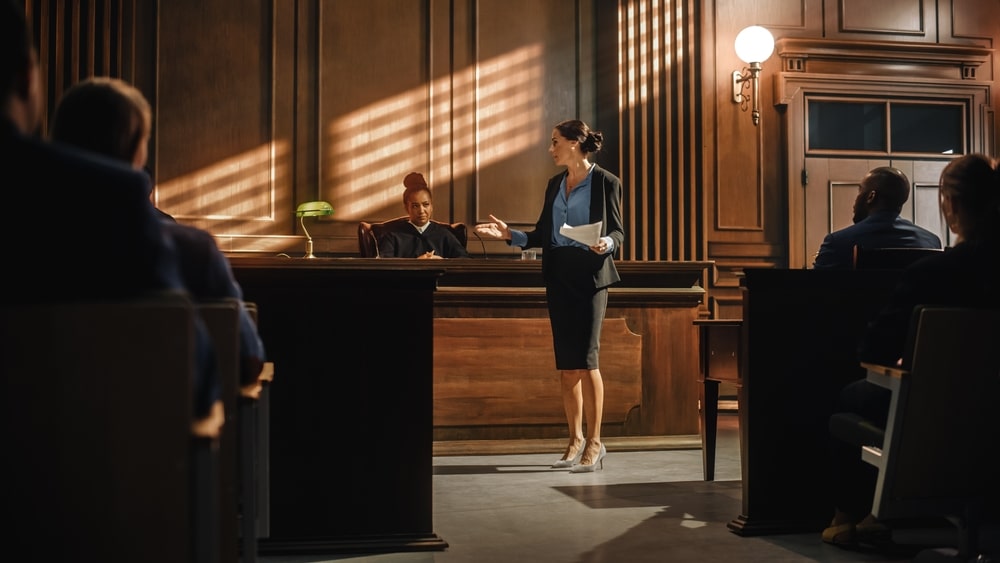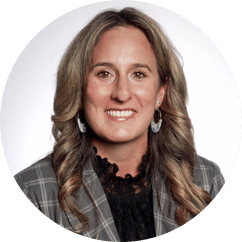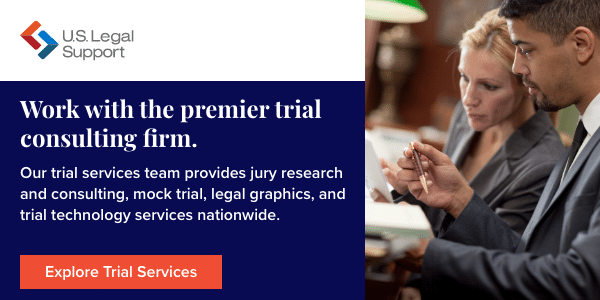How to Write an Engaging Opening Statement

First impressions are crucial—especially when you’re delivering an opening statement to a court of law, establishing and framing the crux of a case for judges and jurors when a trial begins. Clarity, conciseness, resonance, and other facets of effective writing and public speaking all affect your opening statement’s reception and its impact on judges’ and jurors’ perceptions of parties involved with the case.
However, crafting an engaging and persuasive opening statement involves far more than delivering a compelling speech.
Below, we’ll break down how to write a good opening statement. We’ll discuss the elements they contain, how to avoid argumentative statements, strategies, and more. With this guidance, you’ll be able to craft a compelling opening statement for trials of any size.
What is an Opening Statement?
Opening statements comprise the first significant stage of a trial once it begins, with the lawyers for each party addressing the judge(s) and any jurors. Through the cohesive and thematic presentation of a given case, its facts, its evidence, and what each side intends to prove, lawyers attempt to help judges and jurors understand the issue or dispute, frame it favorably for the party they represent, and position themselves to achieve the desired verdict.1 Whether in a bench or jury trial, the opening statement sets the stage for the entire proceeding.
What Makes an Opening Statement Good?
Lawyers need to strike a balance in order to craft an effective opening statement. Otherwise, they risk miring juries in the details or failing to communicate and connect with jurors.
Opening statements need to present a compelling story that captures the jurors’ attention and makes them interested in hearing all the details of your client’s case throughout the trial.
Determining Your Opening Statement’s Theme
As opening statements generally contain so much information, it’s crucial that you distill these elements to their essence and theme.2 This theme should be the primary takeaway jurors have once you’ve concluded. When developing it, remember that it needs to:
- Be easily grasped
- Resonate with the jury
- Convey how the evidence you’ll present connects
This starts with a simple, straightforward description of the case itself. How would you communicate it to someone outside the legal profession in one or two sentences? For example, you may state that you intend to demonstrate one party’s pattern of behavior over multiple incidents.
Your trial theme should also encompass motives and attempt to explain what incident(s) occurred leading to the lawsuit in broad strokes.2 It should inform juries and provide some context of what they should be looking and listening for as the trial unfolds to pick up on consistent threads tying together your case.
However, you also need to be careful with what your opening statement explicitly asserts.
Is an Opening Statement an Argument?
No, and being argumentative while delivering your opening statement is one of the most common mistakes. It may result in the opposing counsel objecting or the judge stepping in.
But when lawyers need to straddle a fine line between being persuasive and argumentative—and even legal textbooks acknowledge the difference as ambiguous—how do you evaluate your drafted opening statement to ensure it complies? Per Modern Trial Advocacy: Analysis and Practice (Law School 4th Edition), two questions provide better guidance3:
- Does your opening statement involve an attempt to convince the judge or jury of a certain decision or why a certain decision is correct?
- Does your opening statement assert the importance, weight, or meaning of evidence?
If you’re concerned that the theme you’ve built your opening statement around borders on being argumentative, you can re-construct the statement to avoid objections. Lawyers are commonly allowed to state their themes to bookend their statement at the beginning and end, so long as everything between avoids making any arguments.2
Opening Statement Strategy
Crafting a compelling opening statement requires various strategies and considerations, but let’s examine some of the most fundamental aspects.
Remember—It’s Not Exactly Your First Time Before this Jury
It’s important to distinguish that your opening statement won’t quite establish jurors’ first impressions of lawyers and their clients—only that of the case itself during the trial. So, the art of crafting an engaging and persuasive opening statement (and the context in which it is delivered) begins well before gavels open proceedings.
During “voir dire” (or pre-trial jury selection), the following will likely affect how jurors regard lawyers and their clients:
- Body language and nonverbal communication
- The questions asked of them
- The challenges raised and grounds on which to disqualify prospective jurors
Additionally, if the case receives significant media coverage and earns a high profile (even among local communities), there will be narratives disseminated outside the courtroom that may affect jurors no matter how stringent the selection process is. For example, impartial jury selection for the trial and sentencing of the man who bombed the Boston Marathon in 2013 still remains problematic, with a judge ordered to investigate potential juror bias in March 2024.4
Thus, your opening statement may need to account for and counteract any biases acquired during voir dire, from pre-trial press, or other sources.
Who Delivers Their Statement First?
Like a chess match, the strategy that informs your opening statement will somewhat depend on whether you go first or second. The party bearing the burden of proof—either the plaintiff’s attorney or the prosecutor—always delivers first, followed by the defendant’s attorney.
Write a Good Hook—and Get to It Promptly
Returning to the comparison between opening statements and movie trailers, both need a good hook. For trailers, that might be a tagline or a memorable image. But for opening statements, the hook is the presentation of your theme. Vehicles like memorable quips that stick with jurors or an emotive and resonant depiction of duress can aid your theme’s delivery.
However, if it takes too long to get to a point or foster interest, you may come across as rambling, lacking confidence, or being ill-prepared. If this happens, you might lose the attention and interest of your audience—the jurors.
Construct a Narrative
While your hook should deliver the most impact, it also needs to complement the broader foundation your opening statement lays for your case. And that foundation should be built through storytelling.
Note, however, that storytelling doesn’t mean waxing lyrically before the court.
For example, consider a case determining liability and restitution following an automobile accident. During your opening statement, you can explain that your client’s quality of life has been impacted and that the witnesses you’ll call will testify how.
Perhaps you’ll explain to jurors how you intend to call to the stand your client’s:
- Supervisor, to demonstrate how a physical impairment or disability did not exist prior to the accident but now prevents their ability to work and maintain employment
- Friends and family, who will speak to the active lifestyle your client had prior to the accident, which they can no longer enjoy
- Independent medical experts, who will confirm doctors’ assessments and treatment plans to verify that the impact to your client’s quality of life specifically resulted from the accident rather than caregivers’ mistakes or a separate incident
In each of these witness examples, there are no value judgments or long-winded depictions of hardship. They aren’t needed to convey the story.
How you discuss witnesses or evidence in your opening statement will construct a narrative for the jurors on its own—they now come away with a better understanding of how your client was impacted and to what extent.
This story will provide a structure to the various arguments of your case, facilitating the jurors’ ability to follow along as you present it.
Stick to the Facts—But Be Discerning with Their Presentation
Since lawyers can’t be argumentative during their opening statements, sticking to facts provides a surefire blueprint for what you should touch on. However, similar to constructing a hook and broader narrative, the presentation of facts matters, too.
For example, the proximity with which you state facts can associate or tie them to others. If you want to demonstrate a link between incidents, present them one after the other in your opening statement; to prevent association, separate them into different parts of your statement and ensure what you say between minimizes the link.
Returning to the example of an automobile accident trial, you could state, “The defense will attempt to link my client’s condition to a prior accident that occurred five years earlier, but we will present medical records and independent experts’ testimony that the injuries sustained from the recent crash cannot be tied to it.”
How to Craft an Opening Statement or Brief for Bench Trials
A “bench trial” refers to a case without a jury, in which the assigned judge solely determines the merits, facts, and decision of the trial. In these instances, a straightforward and concise brief may achieve better outcomes.
If writing a brief in place of an opening statement, be sure it clearly states the5:
- Causes of action
- Theories of liability
- Parties involved
- Relevant statutes and applicable case law (as needed)
Do You Have to Deliver an Opening Statement?
As parties can waive their right to an attorney and represent themselves, lawyers and their clients can forgo an opening statement. However, outside of instances like bench trials where briefs may suffice, it’s generally not a good idea to let opposing counsel deliver a speech without presenting your side as well.
Craft Compelling Opening Statements with the Trial Experts at U.S. Legal Support
Whether you’re reviewing before your first-ever trial or have already developed a stellar reputation as a litigator, everyone benefits from testing their opening statements prior to delivering them in court.
The TrialQuest division of U.S. Legal Support can provide you with decades of experience across 53,000 high-risk trials to refine your opening statements and ensure they leave an impact. Between mock trials, focus groups, jury consulting, trial presentation, and other trial services, our team will help prepare you and your clients to achieve the verdict you seek.
Reach out to learn more about our trial services.
Sources:
- Cornell Law School Legal Information Institute. Opening statement. https://www.law.cornell.edu/wex/opening_statement
- University of Houston Law Center. Effective Opening Statements. https://www.law.uh.edu/center4clp/streetlaw/Mock%20Trial/Mock%20Trial%20AY%202017-18/Handouts%20&%20Activities/Opening%20Statements%20Handout%202.pdf
- Temple University Advocacy and Evidence Resources. Opening Statement v. Argument—Where is the Line? https://law.temple.edu/aer/2019/03/23/opening-statement-v-argument-where-is-the-line/
- AP News. Appeals court orders judge to probe claims of juror bias in Boston Marathon bomber’s case. https://apnews.com/article/boston-marathon-bombing-tsarnaev-juror-bias-4cf3031d41cb0ab1bd1cad2bd3ad107a
- Mark Mooney. Opening Statements: What Everybody Does Wrong. https://www.advocatemagazine.com/article/2019-july/opening-statements
- Center for Sales Strategy. Seven Seconds to Make a First Impression. https://blog.thecenterforsalesstrategy.com/seven-seconds-to-make-a-first-impression

Editoral Policy
Content published on the U.S. Legal Support blog is reviewed by professionals in the legal and litigation support services field to help ensure accurate information. The information provided in this blog is for informational purposes only and should not be construed as legal advice for attorneys or clients.


